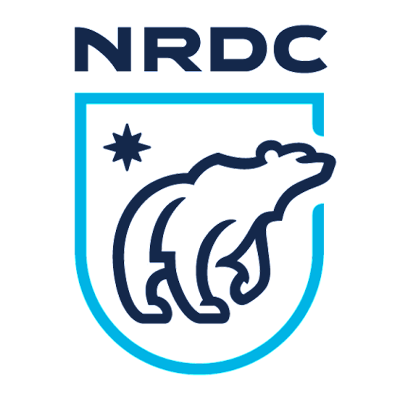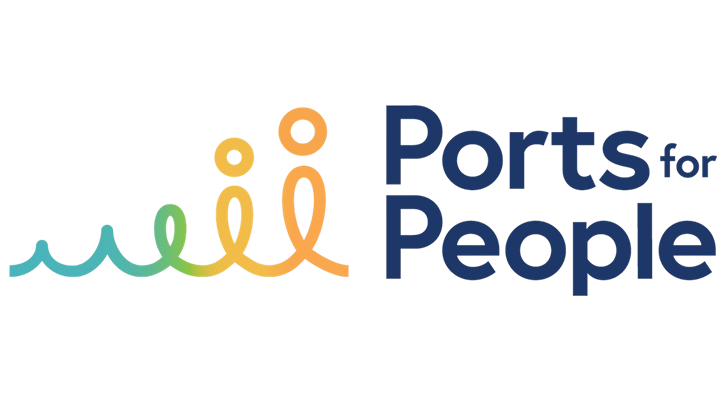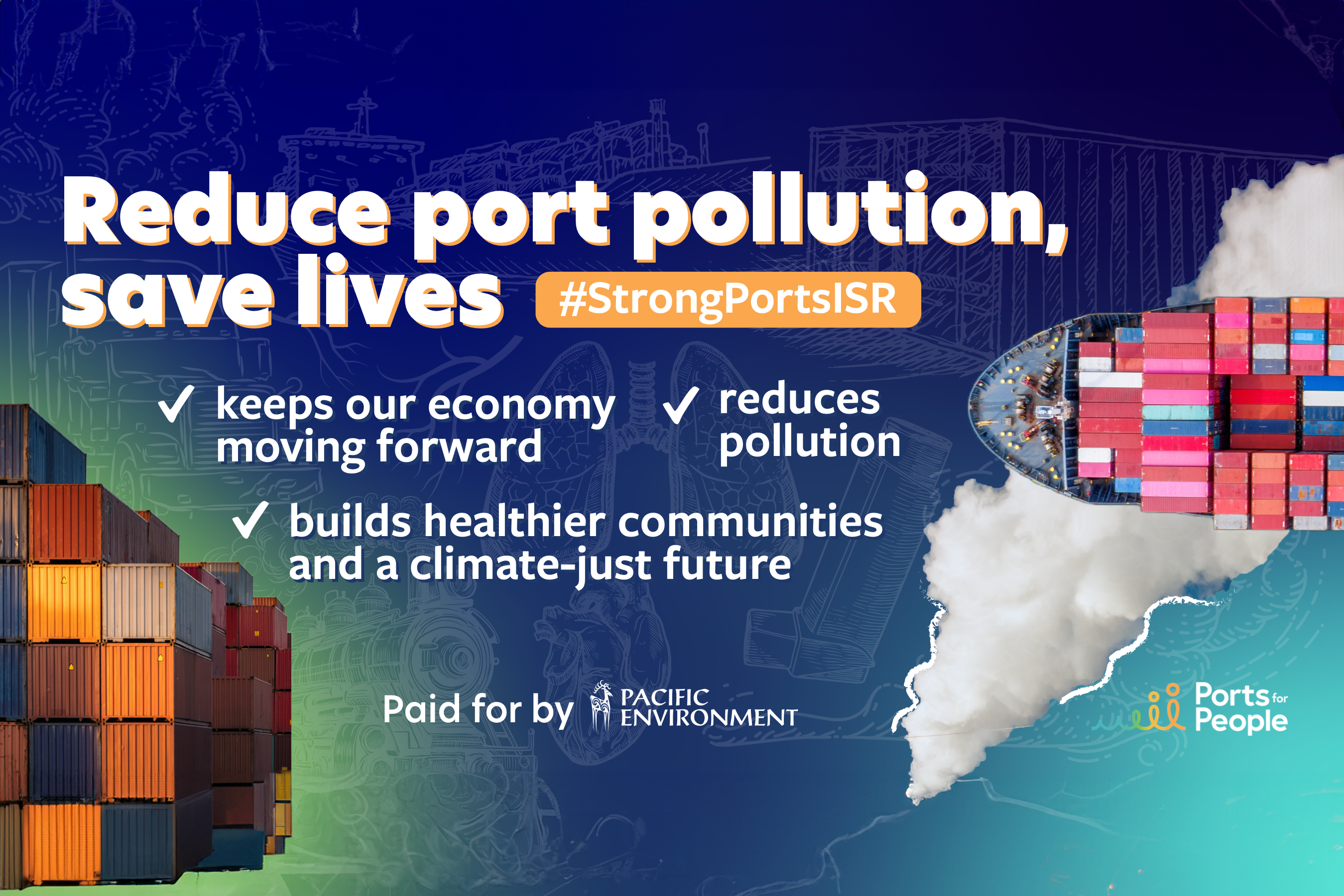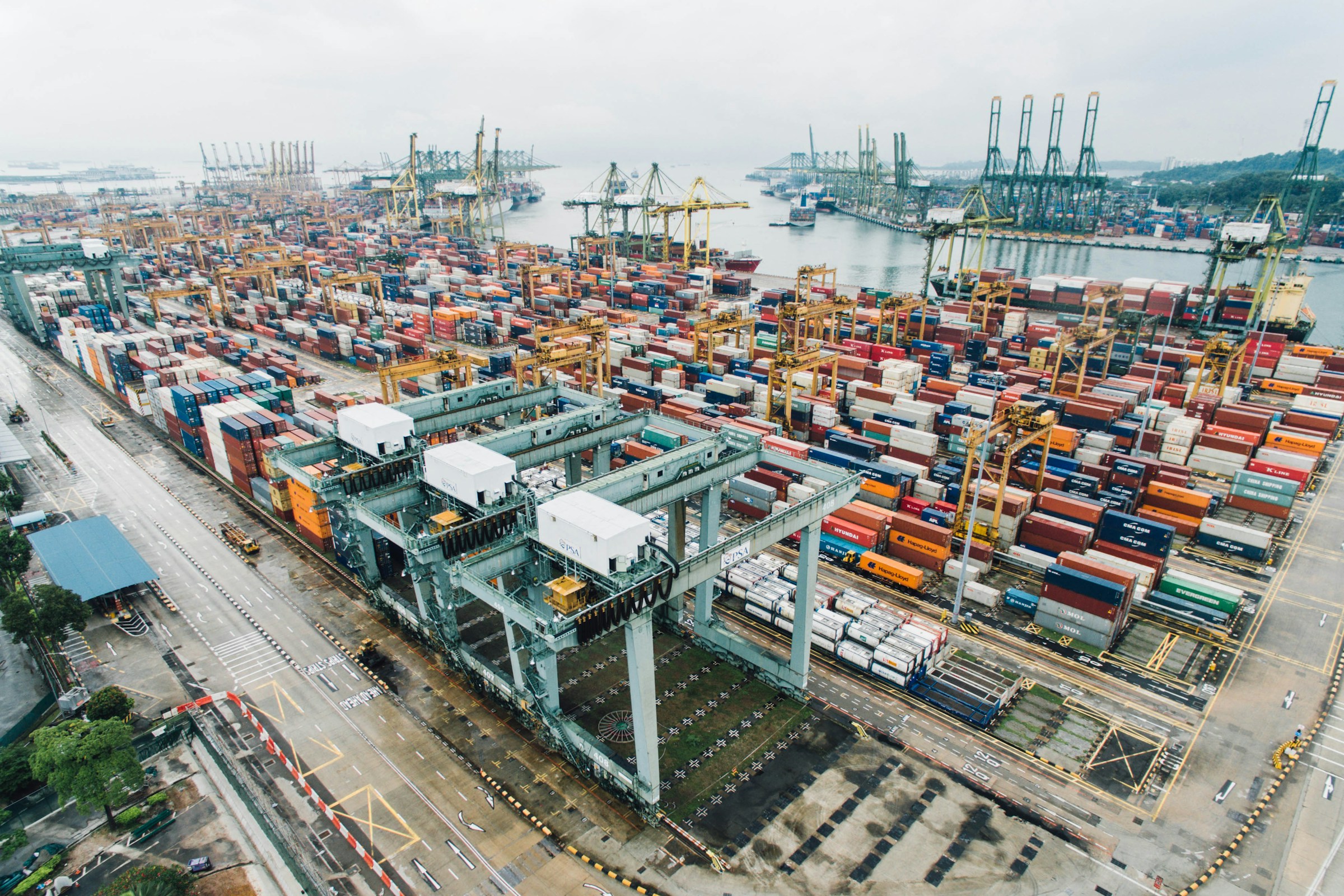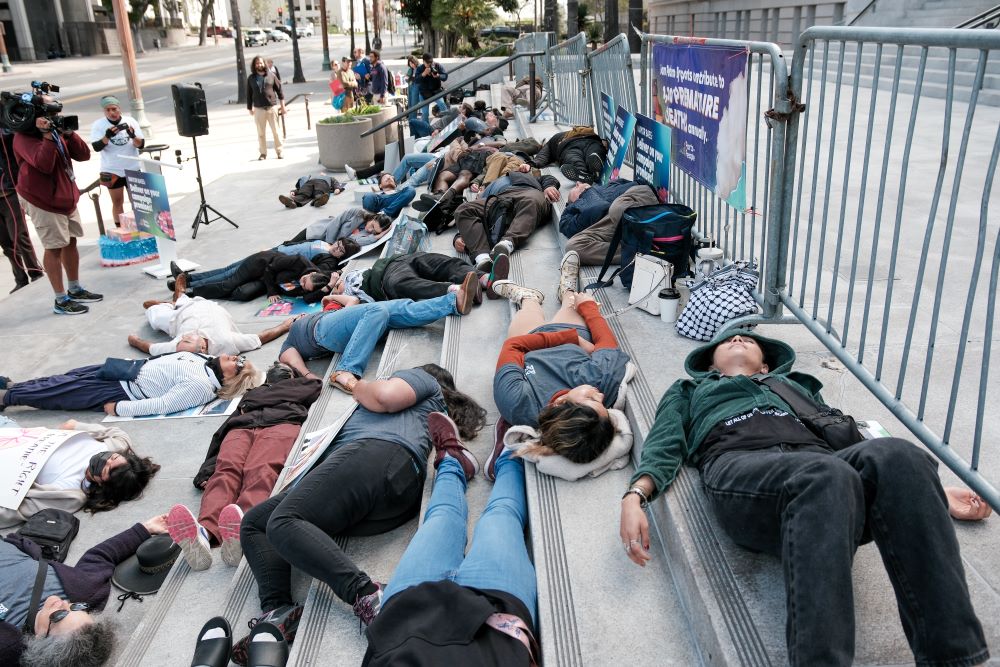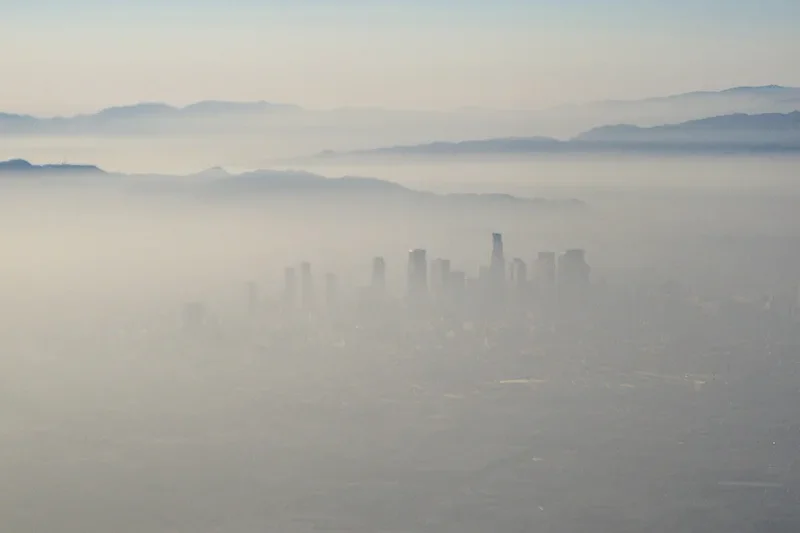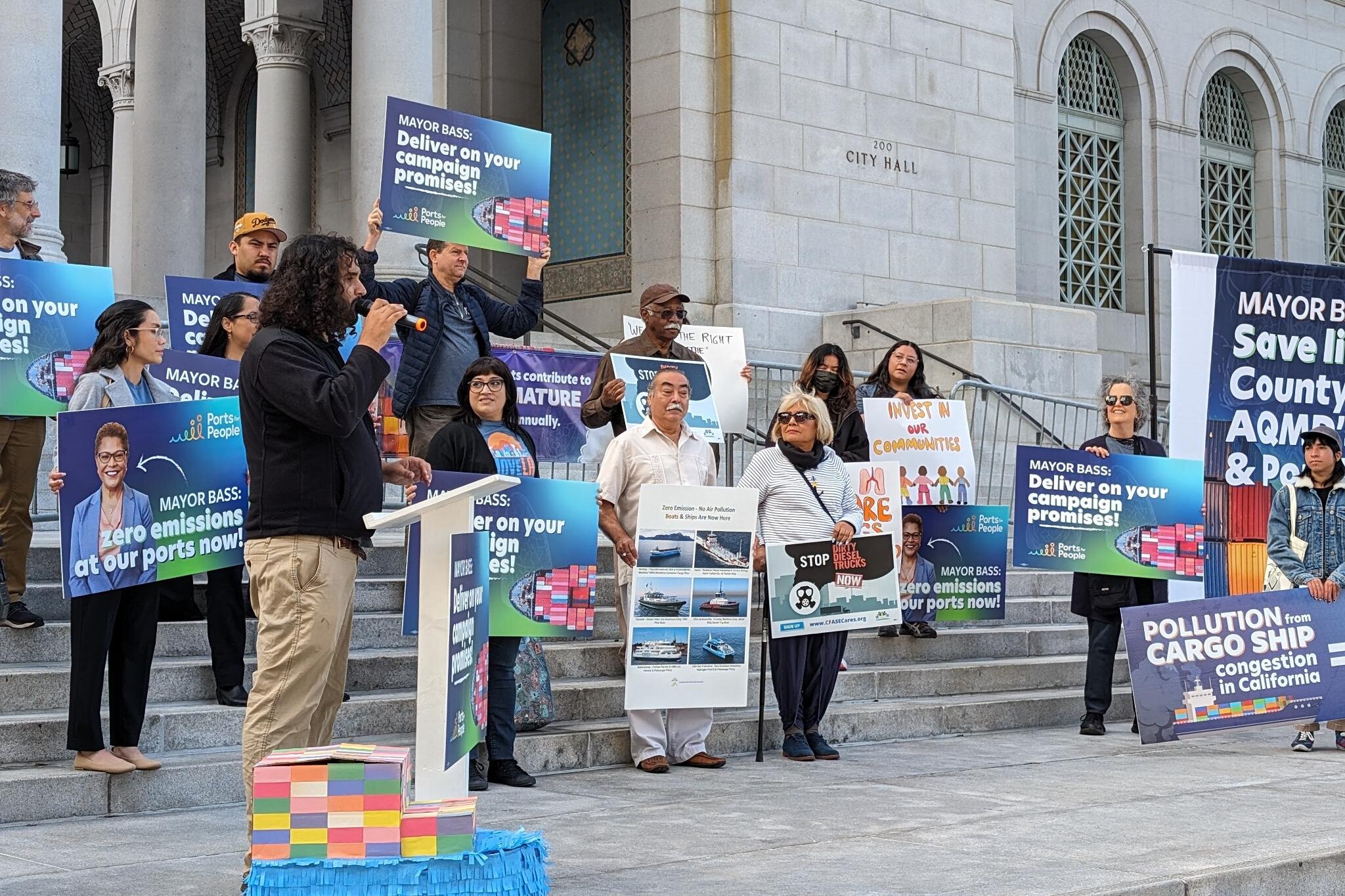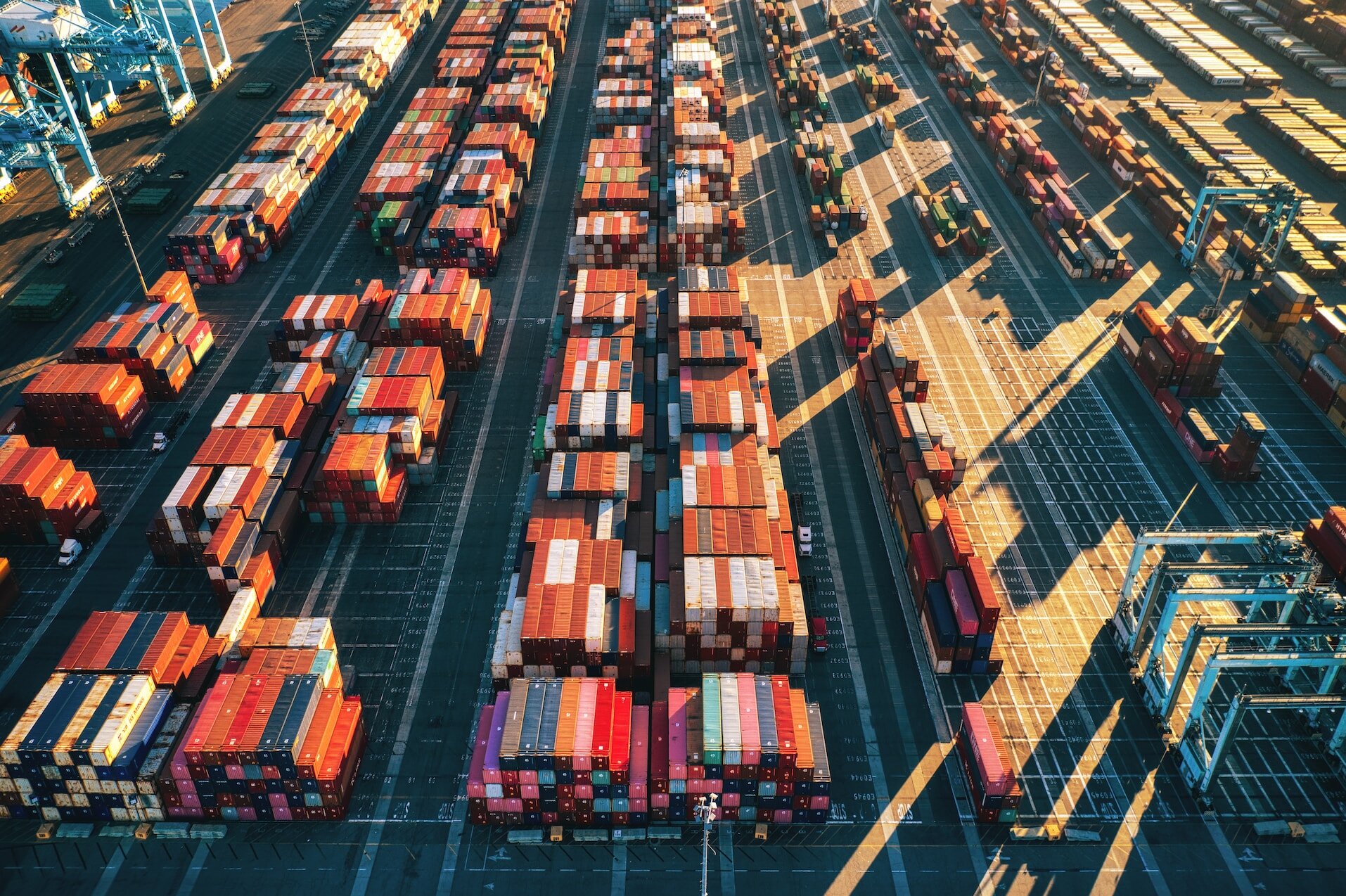South Coast Air Quality Management District must regulate polluting port emissions
#StrongPortsISR
From ships arriving or departing our ports, to the trucks and trains navigating through our communities daily, the burning of fossil fuels is present at every step of freight movement. This toxic burden falls hardest on Black, Brown, Indigenous and working-class frontline communities.
It’s time for the South Coast Air Quality Management District (SCAQMD) — the regional agency responsible for regulating air quality in California’s South Coast region — to take decisive action. We need SCAQMD to adopt a strong Indirect Source Rule (ISR) for Marine Ports to slash emissions, accelerate zero-emission infrastructure and address long-standing environmental injustice. Add your voice to the call for clean air and help build a healthier future for all.
We’re demanding an effective ISR that:
- Sets bold emissions reduction targets with accountability for missed goals.
- Invests in zero-emission infrastructure free from fossil fuels.
- Delivers accurate public emissions monitoring for transparency.

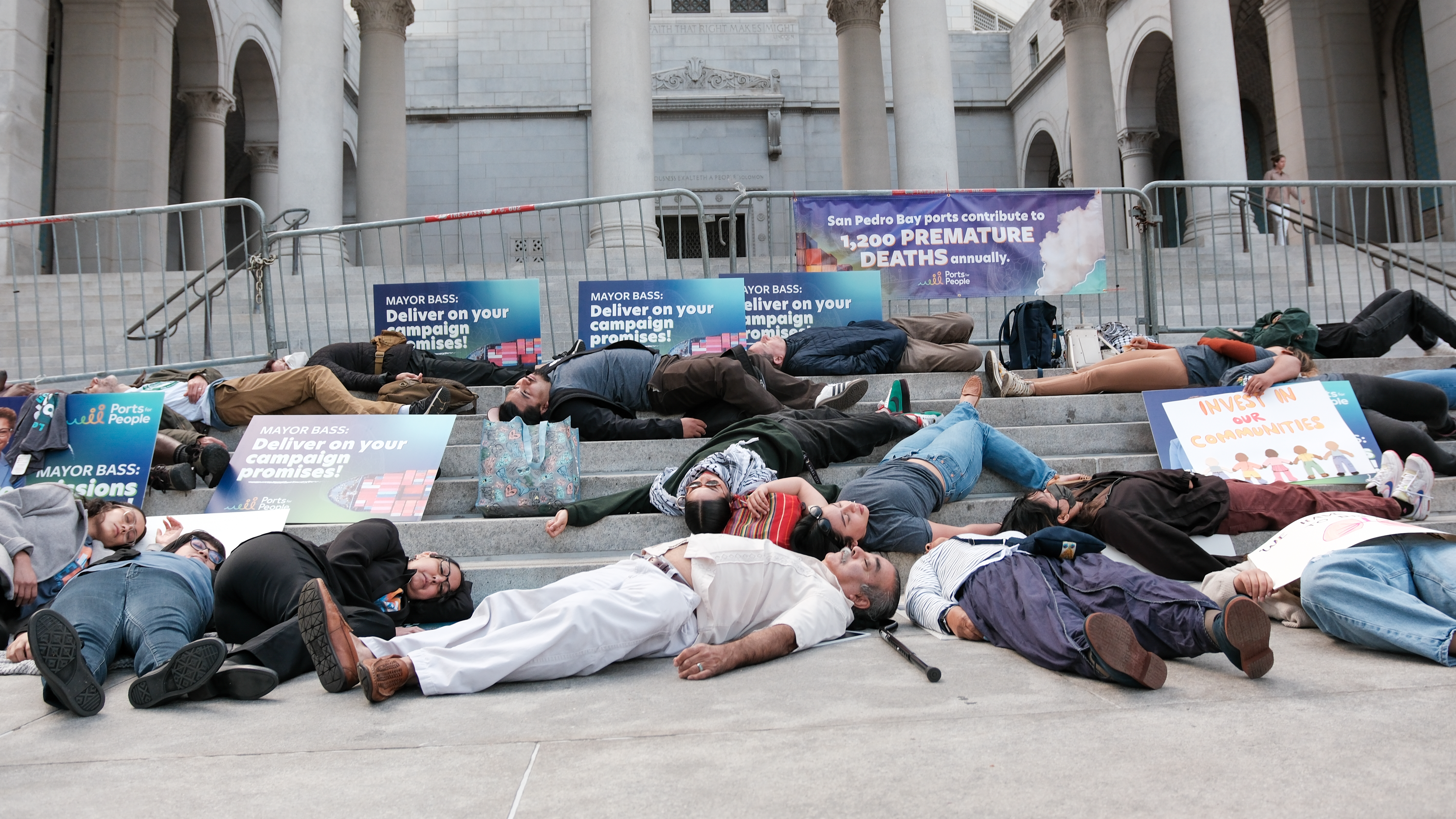
T.H.E. Impact Project and allies held a rally and “die-in” on the steps of Los Angeles City Hall on Friday, April 26, 2024, during Earth Week. The event highlighted the urgency of Mayor Bass championing AQMD’s upcoming Ports ISR.
Why we need bold action on port pollution
Communities are at risk from pollution at the San Pedro Bay ports
Los Angeles County is home to the San Pedro Bay Port Complex, encompassing the Ports of Los Angeles and Long Beach. These ports are the largest single source of smog- and particulate-forming pollution in California. Recently, the EPA rejected South Coast AQMD’s plan to meet Clean Air Act standards, citing inadequate measures to control pollution. Continued failures by SCAQMD could lead to federal oversight and economic sanctions for the region. Now more than ever, adopting SCAQMD’s Ports Indirect Source Rule is critical to improving air quality, safeguarding public health, and ensuring compliance with federal clean air laws.
Freight pollution puts the Inland Empire at risk
Just inland from the San Pedro Bay Ports, the Inland Empire faces over half a million truck trips daily. These trucks transport goods to rail yards and nearly 4,000 nearby warehouses, creating a freight movement corridor that exposes residents to hazardous air pollution. Alarmingly, over 600 schools are located within half a mile of these warehouses, leaving children and families vulnerable to respiratory illnesses, cardiovascular disease, and other severe health risks. For frontline communities, this intense concentration of pollution worsens already unacceptable public health disparities.
Urgent action needed to address pollution and the public health crisis
While initiatives like the San Pedro Bay Ports’ Clean Air Action Plan (CAAP) aim to reduce greenhouse gas emissions by 40% (from 1990 levels) by 2030, there are no binding commitments to meet these targets. Progress has stalled for nearly a decade, leaving vulnerable communities exposed to unchecked pollution. Without enforceable regulations like a strong Ports ISR, the region will struggle to meet its air pollution and climate goals, perpetuating health risks and environmental injustices.
Equitable, green jobs for a zero-emission future
Port workers bear the brunt of pollution from fossil-fueled vessels and equipment, endangering their health and safety. A transition to human-powered zero-emission shipping technologies is not only critical for cleaner air but also for creating equitable, sustainable jobs. Investing in clean infrastructure ensures long-term employment opportunities that prioritize worker safety and environmental protection.
Talking points
Ready to get involved? Use our helpful talking points to amplify your voice and inspire local leaders to take meaningful action.
Additional resources
LETTER
Now is the time for bold action!
Local air quality regulators must adopt a strong ISR for Ports to cut emissions now and fast-track clean technologies.
You can also urge your local air quality management district, city council (Los Angeles / Long Beach) and elected officials to prioritize clean air, equitable jobs and a sustainable future. Together, we can transform our ports into drivers of health, equity, and prosperity for all communities.


